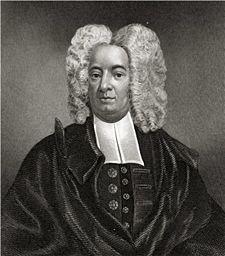The following is from the book Myths: Fact and Fiction about Teaching and Learning by Israel Galindo. How well do you know fact from fiction?
MYTH: In Salem, Massachusetts circa 1692, several women were accused of witchcraft, tried, and burned at the stake.

Cotton Mather
TRUTH: While an outbreak of “witchhunting” did break out in Salem Village from March to September of 1692, no one tried in court of being a witch was ever burned at the stake in Salem. By September 22 the court had tried and convicted 27 persons. Nineteen people were hanged and one crushed to death, but no burnings. The burnings were in Europe.
The Salem incident began when two young girls in the household of the Reverend Samuel Parris began to behave oddly. The girls had participated in meetings at which incantations had been cast and attempts made to foretell the future; they were examined by a doctor, ministers, and magistrates, who concluded that they were bewitched. The resulting frenzy spread rapidly. Hearings began on March 1, and by the middle of May, 100 persons were in prison awaiting trial.
With the jails overflowing, the hysteria abated. Cotton Mather delivered a sermon arguing against the mass convictions, and some clergy began openly to criticize spectral evidence. With this support the governor abruptly intervened and freed all who were in jail, and the executions stopped.
MYTH: In order to help students keep from being bored in your class you should avoid classroom routines and do something completely different every week to “keep them guessing” and to facilitate novelty.
TRUTH: Routines and habits do not create boredom. In fact, good classroom routines actually help the learning process by providing a sense of order and familiarity (we don’t learn when we feel anxious, uncertain, or threatened). Routines help learners be alert for learning moments and familiar cues like alerts and desists. They create “learning pathways” for your students for the reception and processing of new information.
Routines also provide for classroom efficiency in matters like passing out papers, taking attendance, distributing and collecting materials, moving from a large group to small groups, and hanging up coats. Such housekeeping and instructional routines can gain you up to ten minutes of teaching time in one class session!
Paradoxically, sound routines actually enhance creativity and novelty in your classroom. When everything is “novel†nothing is. Having a recognized routine will enhance your occasional novel teaching approaches and methods. Instead of being on guard against what may or may not happen next, learners will respond more readily to changes from the routine for learning because they’ll come to appreciate that novel instances have a purpose for learning. Routines establish sound didactic boundaries within which creativity can flourish.
When you establish good classroom routines, there is no need to re-invent the wheel every week. Work to create sound routines that will (1) reflect sound didactic principles, (2) allow for creativity and novelty on occasion, and, (3) will buy you teaching time by helping with classroom housekeeping matters.

You can order a copy of the book Myth: Fact and Fiction about Teaching and Learning by Israel Galindo (ISBN 0-9715765-4-8) directly from Educational Consultants.
